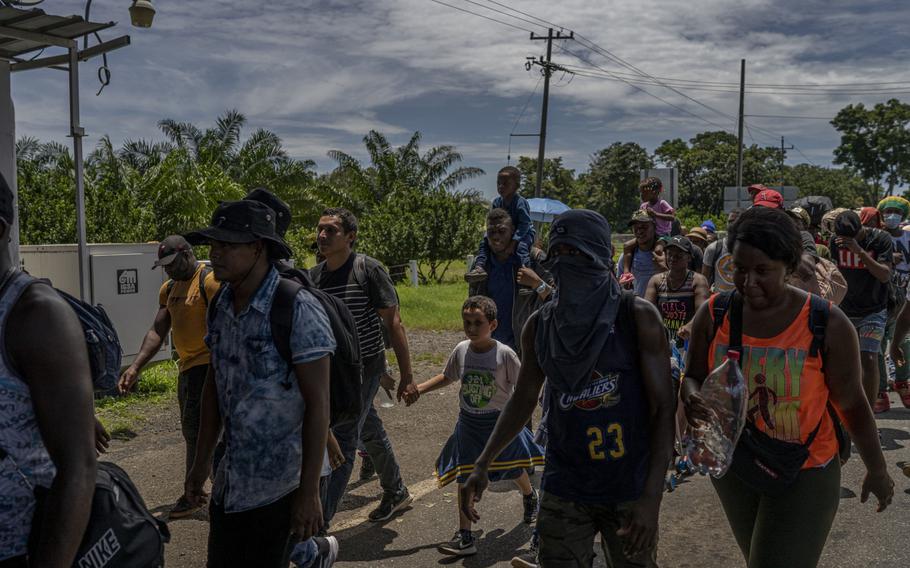
Haitian migrants in Tapachula, Chiapas state, Mexico in September 2021. (Alejandro Cegarra/Bloomberg)
Mexico, along with President Joe Biden’s administration and the United Nations, is considering setting up a temporary program to help prescreen tens of thousands of migrants for U.S. entry eligibility as border crossings increase again.
The program would be focused on about 40,000 migrants from Venezuela, Haiti, Nicaragua and Cuba who are in southern Mexico, according to the nation’s top diplomat.
Foreign Minister Alicia Barcena said in an interview that U.N. migration and refugee agencies would review their eligibility before those who may qualify would have their applications processed by personnel from a mobile U.S. Consulate. The U.S. government doesn’t have a permanent facility as far south as the state of Chiapas, on Mexico’s border with Guatemala.
The plan would only be for migrants from those four countries, whose citizens have specific parole processes for U.S. immigration due to conditions in their home nations, Barcena said Friday on the sidelines of the U.N. General Assembly. They have been stuck in Mexico since May, when the U.S. ended Title 42 — a pandemic-era emergency authority that restricted the right to seek asylum.
Barcena said she couldn’t give a timeline or exact location for the U.N. facility to be set up. But it wouldn’t be in the border city of Tapachula, where many migrants first arrive. Mexico’s own refugee agency is already processing people there under the nation’s own asylum criteria, and the government doesn’t want to mix the processes together.
“We would like very much to have mechanisms that are legal, orderly and safe,” for people seeking to immigrate to the U.S., Barcena said. “We do have a lot of progress on the regular pathways of migration.”
Bárcena highlighted data showing that more than 170,000 Venezuelans, Haitians, Nicaraguans and Cubans have arrived to the U.S. under humanitarian permissions, with parole granted to those nationalities. The current parole program allows as many as 30,000 people per month to immigrate without making the dangerous trek through Mexico and Central America that involves risking their lives and paying smugglers thousands of dollars.
Still, migrant encounters on the U.S. southern border rose again in August to the highest level this year after initially falling in June and July as the Department of Homeland Security launched carrot-and-stick measures to deter unauthorized border crossings and offer legal pathways. For the current fiscal year, the number of encounters is on pace to match or eclipse the record 2.4 million from 2022.
Mexican President Andrés Manuel López Obrador’s government plans to discuss migration, as well as security and efforts to stop fentanyl trafficking during high-level talks on Oct. 5. Mexico will host U.S. Secretary of State Antony Blinken, Homeland Security Secretary Alejandro Mayorkas, Homeland Security Adviser Elizabeth Sherwood-Randall and Attorney General Merrick Garland during that visit.
Bárcena was named Mexico’s top diplomat in June after her predecessor, Marcelo Ebrard, stepped down to launch an unsuccessful bid for the 2024 presidential nomination from López Obrador’s party. She led the U.N.’s economic cooperation agency for Latin America and the Caribbean for 14 years through early 2022.
She will be in Washington on Sept. 29 for an economic dialogue Mexico holds every year with the U.S. It will include Blinken, Commerce Secretary Gina Raimondo and U.S. Trade Representative Katherine Tai, along with Mexican Finance Minister Rogelio Ramirez de la O and Economy Minister Raquel Buenrostro, Bárcena said.
Bloomberg’s Maya Averbuch contributed to this report.